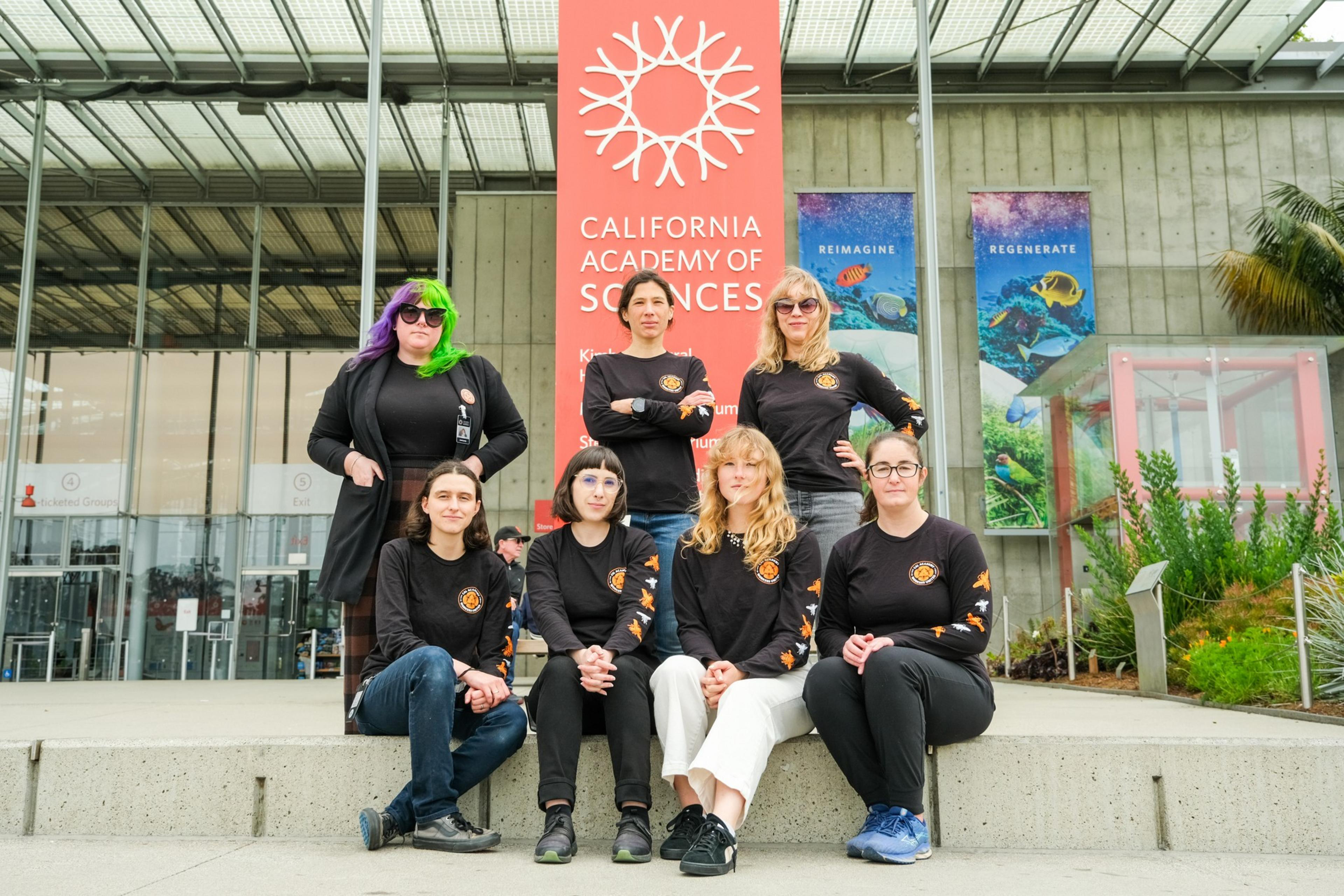As curators of one of the world’s biggest natural history collections, they oversee a veritable library of life: nearly 46 million specimens, from tiny tardigrades to massive orca bones.
Soon, about a third of these keepers of science’s crown jewels may be out of a job, victims of a yawning $8.7 million budget deficit at the California Academy of Sciences, which is weighing significant cuts to the 16-person curatorial staff at its Institute for Biodiversity Science and Sustainability.
In a letter read to a governing board subcommittee on May 6, a cohort of Cal Academy scientists questioned the wisdom of eliminating positions—including curatorships ostensibly protected by restricted endowment funds—so central to the function of one of the oldest and largest museums on the West Coast.
The curatorial staff’s letter, which has not been previously reported, cited two decades of “unending budget crises, budget declines, divisional restructuring and staff cuts” that have culminated in the current layoff threat.

Workers fear that scores of jobs in virtually every department could be on the line as Cal Academy ponders how to cut $4 million in labor costs to close a hole more than twice that size in its $100 million budget before the fiscal year ends next month.
In a separate letter (opens in new tab), the 350-member CalAcademy Workers United—the union that formed last year and is still trying to hammer out its inaugural contract—urged trustees to reject any budget with involuntary layoffs and to explain why they’re justified amid rising executive pay and a hiring spree for non-public-facing roles.
The union cites public tax records showing lucrative executive pay, “including eye-popping bonuses for top-earners.”
On top of his $484,458 annual salary and $193,996 housing allowance, Executive Director Scott Sampson pocketed a $145,000 bonus last year, according to the academy’s latest IRS filings. Those same records say his contract also makes him eligible for an annual “stretch bonus” of up to $50,000 “for outstanding accomplishments in fundraising, establishing of trustees.”
In total, tax filings cited by the union show that compensation for the top director and other senior leaders ballooned from 5% of the labor budget in 2007 to 10% today.
“It is egregious and disingenuous to tell staff that cutting executive pay would ‘not yield meaningful savings,’” the union’s letter states.

Workers also questioned why the museum posted ads for 11 new personnel roles amounting to $2 million in combined salaries if it’s trying to cut twice as much in labor costs by eliminating staff who work on critical research or interact with the public.
“We are being told these HR roles were ‘budgeted for,’” the union says. “Does that mean the rest of the [Cal Academy] staff were not?”
Meanwhile, the union noted, the academy continues to spend millions of dollars on outside contractors, including more than $5 million a year on advertising and marketing firms, according to IRS filings.
Cal Academy spokesperson Ronna Kelly declined to respond to the claims “because we are in union negotiations with our staff and want to prioritize working directly with them.”
When asked about the concerns from curators, who aren’t unionized, she directed The Standard to the academy’s most recent annual report (opens in new tab). Issued a year ago, that report cites a budget shortfall of about $13 million—despite memberships and museum visits finally rebounding to pre-pandemic levels last summer.
‘There’s a ton of fear right now’
For Holly Rosenblum, a senior biologist at Cal Academy’s aquarium, it’s hard not to feel a sense of deja vu over the current impasse.
Like many cultural institutions, Cal Academy was severely debilitated by the pandemic, which in 2020 led the museum to lay off 105 staffers, place 96 on temporary furlough, reduce hours for 11 and slash pay for 165.
“How the layoffs went during Covid was a huge factor for us unionizing,” Rosenblum said. “It organized staff then, and it’s organizing us now.”
After nearly six months of bargaining on its first contract, the union is scrambling to prevent history from repeating itself.
Negotiations stalled a couple of weeks ago with news of the gaping deficit and voluntary separation offers to nonunion staff—neither of which Cal Academy has made public.

The most detailed explanation from management about the academy’s financial outlook came in an April 23 email the executive director sent to staff after the museum’s annual Big Bang Gala and Party After Dark fundraiser.
In the correspondence obtained by The Standard, Sampson said the $8.7 million hole in the budget stemmed from “a reduction in city revenue, fewer tourists in San Francisco, an end to federal stimulus payments, higher-than-expected medical benefit costs and increasing labor expenses.”
Sampson said the academy tried “many different options” to balance the books before considering layoffs and managed to cut its budget gap in half. He said leadership also implemented some cost-cutting ideas submitted anonymously by staff.

“While we are still fine-tuning the proposed budget for fiscal year 2025 (which begins July 1),” he wrote, “approximately $4 million of year-over-year labor expenses still need to be reduced.”
The voluntary separation offers mark the next step to that end, Sampson added.
It’s unclear how many staffers applied for that option, which would entail a $5,000 to $10,000 cash buyout, four weeks of severance pay per year of service and a stipend to cover six months in health care premiums. The museum said in an April 24 email to staff that it would review submissions and reach out to eligible employees by May 10.
More buyouts could mean fewer forced layoffs, but the uncertainty for the time being leaves many academy workers on edge.
“I think there’s a ton of fear right now,” said Clea Matson, a member of the union’s bargaining team and Cal Academy program manager who works in teacher professional development. “Even though the voluntary layoff was posited as this generous package, it’s created an atmosphere where people are like, ‘Am I going to be laid off anyway?’”
